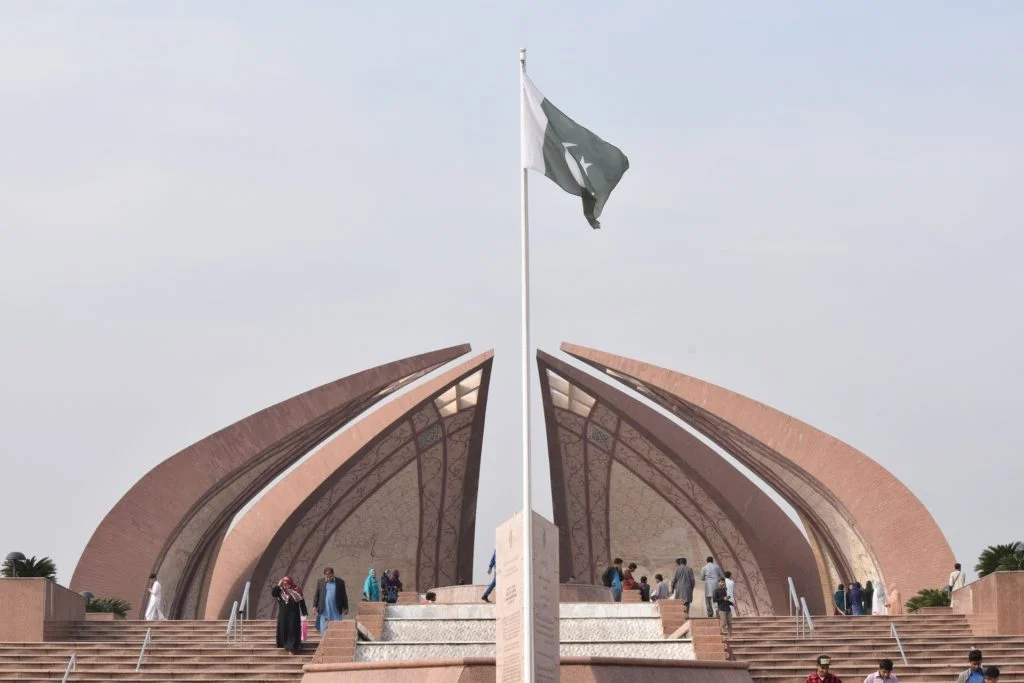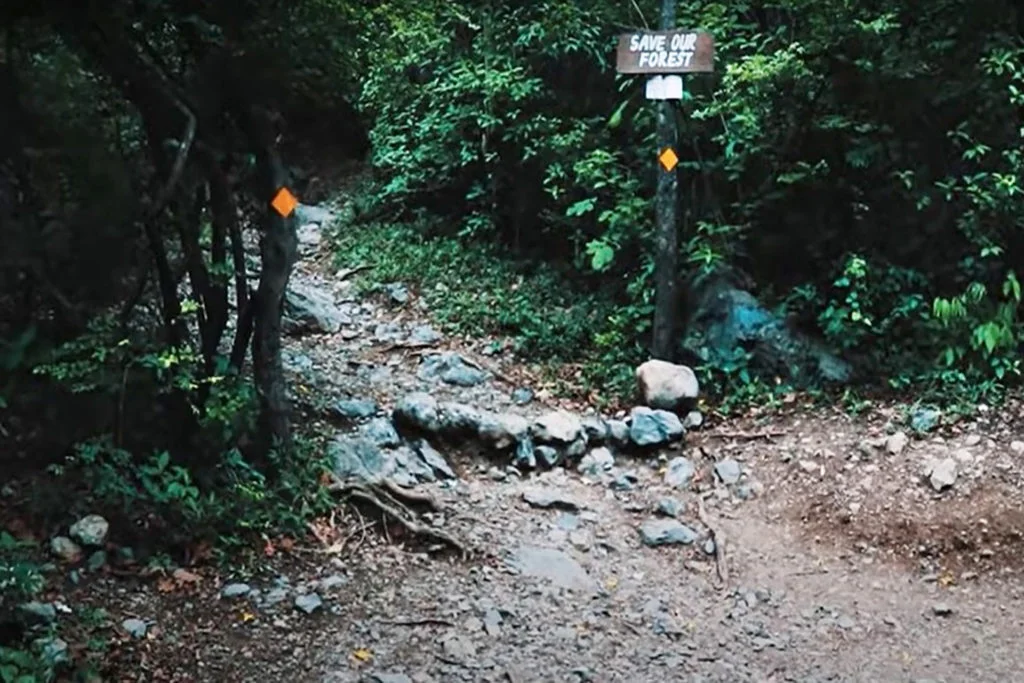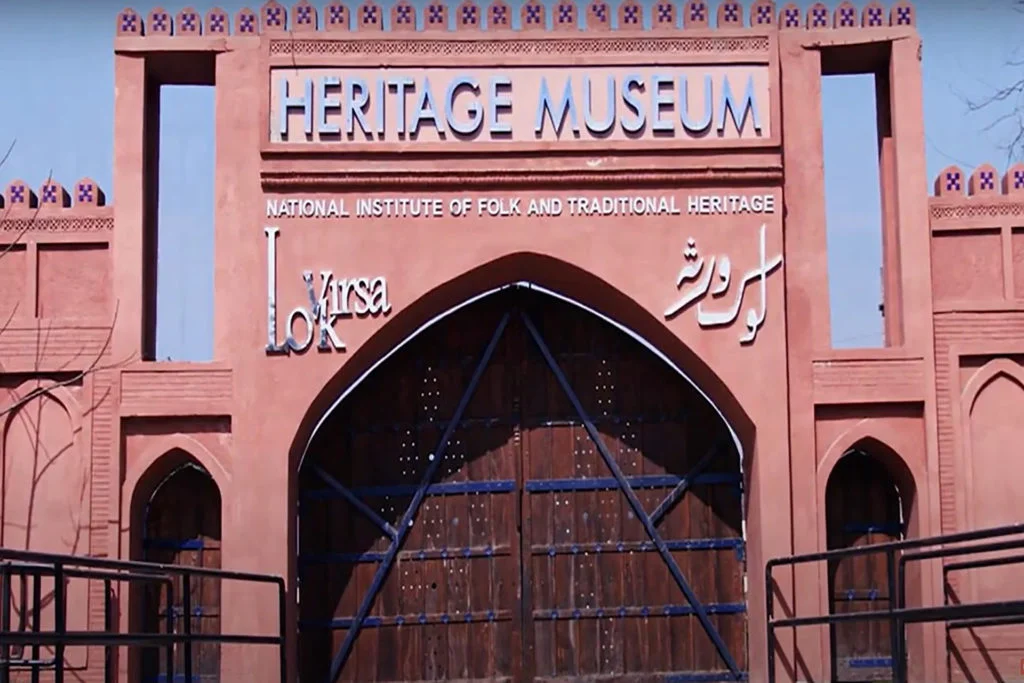The Shrine of Pir Meher Ali Shah Golra Sharif Islamabad also called Golra Sharif is a small town in the Capital city of Islamabad located at the foothills of the famous Margalla hills. It is situated in sector E-11 Islamabad.
Golra Sharif is located at 1710 feet above sea level or 520 meters.
The Shrine of Pir Meher Ali Shah also exists in Golra village, hence the village is called Golra Sharif (Sharif refers to as “honorable”).
Pir Mehr Ali Shah has thousands of devotees all over the world. These devotees pay regular visits to the mausoleum throughout the year.
Golra Sharif History
The History of Golra village is more than 900 years. Before the family of Pir Mehr Ali Shah, a person named Abdullah Khan Golra also known as Dada Golra, had two sons, namely, Shahabuddin Khan and Sihal Khan. Who settled in the area and named the village after their father “Dada Golra”.
One of Dada Golra’s Sons, i.e., Sihal Khan also built a mosque in the village so that the villagers could offer their five-time prayers in the mosque. The mosque is named Sihali Masjid.
Golra Railway Station in Golra Sharif Islamabad
Besides the Shrine of Pir Mehr Ali Shah Golra Sharif Islamabad also known as Darbar Golra Sharif, there is another famous visitors spot i.e. “Golra Railway Station”. The Railway station was built in 1881 and is now a junction. This is an important junction that links Punjab to the KP province of Pakistan through railways.
Pir Meher Ali Shah Golra Sharif Islamabad
Pir Mehr Ali Shah of Golra Sharif Islamabad was a renowned Muslim religious scholar. Golra became famous due to him and the area is renowned due to the presence of his shrine in the village. Pir Mehr Ali Shah Golra Sharif Islamabad
Shah was a popular Punjabi poet of the late 19th century & the early 20th century. He belongs to the Sufi Chisti order. He was renowned for leading the movement against Ahmedias (also called Qadayanis). His famous book saif-i-chistiyai (the sword of the Chisti order) is about anti-ahmedia movement criticizing qadyani mirza Ghulam Ahmed.
Shah ALLAH Ditta caves can be found in a centuries-old village located in Sector D-12 (a few kilometers from Sector E-11) at the foothills of the Margalla Hills in Islamabad. These Caves in Shah ALLAH Ditta village are surrounded by the stunning lush green, saffron fields beyond the first layer of the Margalla Hills. It is believed that the village is as old as 700 years.
It was used as a route from Kabul to Taxila by Alexander and Sher Shah Suri. Shah Allah Ditta Road is said to be built on the exact path followed by the emperor Sher Shah Suri during his visit to the area. Mughal Rulers also passed through this area while traveling between Afghanistan and Lahore / Delhi.
The remains of the Buddhist era dating back to the eighth century can be found in the area. The village is named after a Mughal period Dervish Shah Allah Ditta and bears significant importance for its natural beauty and historical background.
There are old caves in the village that were in use by Shah ALLAH Ditta, the eremite, and afterward by a Hindu Sadhu. These caves are next to the shrine of Shah ALLAH Ditta. The caves Shah ALLAH Ditta temples are located around a naturally occurring streamlined with ancient Banyan trees adding magic to the glory of this ancient site.
Pir Mehr Ali Shah was born on 14th April 1859 and died in May 1937. His father was a descendant of Hazrat Abdul Qadir Jilani in the 25th Generation. Likewise, he was a descendant of Hazrat Hasan-ibn-Ali in the 38th generation.
His mother was also a descendant of Hazrat Abdul Qadir Jilani in the 26th Generation and Hazrat Hassan ibn-e-Ali in the 39th generation.
Pir Mehr Ali Shah received his early education in his early childhood in a local Madrassah where he learned Urdu and Persian. At the age of 15, after completing his early education, he moved to UP in undivided India for further studies.
Hence, he received higher education in different parts of India, which were famous for Islamic education at that time. Some of the cities are Luchnow, Deoband, Rampur, Kanpur, Aligarh, Delhi and Saharanpur.
For around two and a half years, he studied at a Madrassah in Aligarh.
Famous Books
Some of his published books are:
- Tahqiq-ul-Haq Fi Kalima-tul-Haq (The Truth about Kalima-tul-Haq)
- Shamsul Hidayah
- Saif-e-Chishtiya
- I’la Kalimatillah Fi Bayan-e-Wa Ma Uhilla Bihi Legharillah
- AlFatuhat-us-Samadiyyah (Divine Bounties)
- Tasfiah Mabain Sunni Wa Shi’ah
- Fatawa-e-Mehria
- Mulfuzaat-e-Mehria (Sayings of Meher Ali Shah)
Pir Mehr Ali Shah Golra Sharif Islamabad was known to be an authority on the works of Ibn-e-Arabi. In 1933, renowned Islamic scholar and Persian and Urdu poet Sir Allama Muhammad Iqbal wrote him a letter requesting to explain some of the works of Ibn-e-Arabi.
As Allama had to deliver a lecture on the topic. However, Pir Sahib could not reply to the letter due to his meditation and weak health.
Every year, from the 27th to 29th Safar (Islamic Calendar), three days of Urs (Annual Death Anniversary) are being organized and devotees all over the world pay a visit to the shrine and offer Fatiha.
Golra Station / Golra Sharif Railway Station

Golra Sharif Railway Station is basically a railway junction located on Golra Road near Golra Village in the capital city of Islamabad.
The Golra Railway Station is a main railway link providing connectivity to the North and South of Pakistan. This station is located on the main railway line in Pakistan.
Golra station was built in 1882 and was upgraded as a Junction in 1992. Its building is of Victorian architecture style and comprises five big rooms with yellow stones.
Golra Station Museum / Pakistan Railway Heritage Museum

The Pakistan Railway Heritage Museum consists of relics and memoranda associated with the railways of the British era.
The Museum is one of the major attractions for tourists, both local as well as foreign travelers. The museum was built and established in 2003.
Railway Heritage Museum Golra Sharif consists of 3 big halls and contains artifacts describing the history of the railways for more than 150 years. It includes 100 years of undivided India.

Artifacts include old railway mechanical systems, communication tools used at that time, signaling models etc. The operational protocols are displayed in the museum in chronological order.
Relics are displayed in an open yard with a wide array which are now non-existent in modern railways all around the world.
A few examples are steam and electric locomotives, a German postal car, a saloon once in use by an Indian Viceroy i.e. Mountbetton, and a saloon of Maharaja of Jodhpur given as a gift to his daughter on her wedding.
The approach to Golra Sharif is very easy. One can reach the museum or Golra Sharif within half an hour from Islamabad city Centre by Uber. It is around forty (40) minute drive from Rawalpindi Saddar Area.







